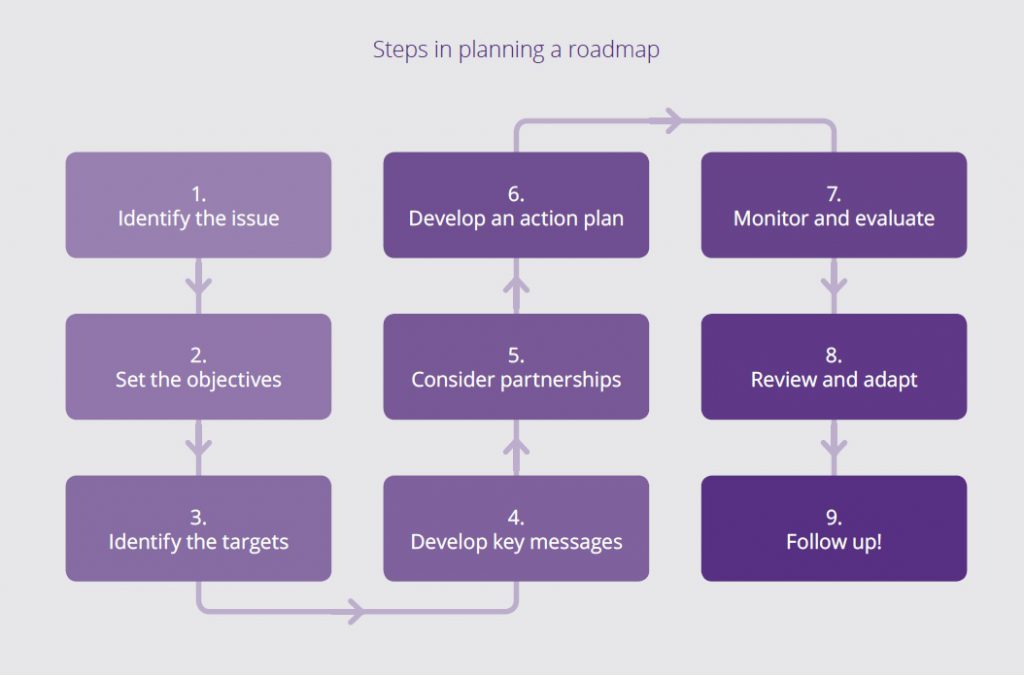
1. Identify the advocacy issue
You need to be specific in identifying the advocacy issue. It is essential to have a good understanding of the challenge you want to address and a clear idea of how it could be solved.
2. Set long, medium and short-term objectives
An advocacy strategy may have various objectives in the short, medium, and long terms. Define them with precision to get them thorough.
Define what kind of action you want the EU to take, depending on the issue, its seriousness and extent. Therefore, give priority to the measures that are most appropriate for a given situation.
It is crucial to identify policy and decision-makers who have the power to introduce the policy changes you propose. Ask yourself: what are the best targets for my efforts, who has the greatest influence? Who are our existing contacts? Which are the ones the most/less sympathetic to my cause?
Identify and be in regular contact with allies within the EU missions in your country and, if possible, in Brussels as well as in Member State capitals.
Clear requests or recommendations should be developed, for a limited number of key actions, to achieve specific, concrete and realistic objectives. Prioritisation is key.
Tailor your message to your target audience and situation. Prepare different kinds of input depending on the type of meeting, and refer to relevant EU or Member State policies confronting your interlocutors with their own commitments.
5. Consider partnerships and networks
Working in coalition with like-minded organisations can bring added value since it bears the potential to increase the pressure on advocacy targets. However, keep in mind that this can also slow down the internal decision-making process.
Partnerships may be particularly strategic when trying to influence individual EU Member States.
6. Develop a timely action plan
Timing is crucial for achieving results. Link your issue to a topic that is already high on the agenda and/or that is receiving attention from the media or general public.
Keep regular contact with the EU delegation in your country to identify its upcoming agenda and priorities.
7. Monitor and evaluate
Take time to discuss the chosen strategy and its outcomes. Assess what has been achieved, what follow-up is required, and which approaches need to be reviewed to better achieve objectives in the future.
8. Review and adapt
Review and adapt your strategy in line with the findings of the evaluation process.
9. Follow up
Have the policy makers taken the actions they had committed to? If not, find out why.
Personal contacts can be the only way to obtain information that is otherwise confidential. If you identify a blockage, try advocating at a different level, using other entry points.
